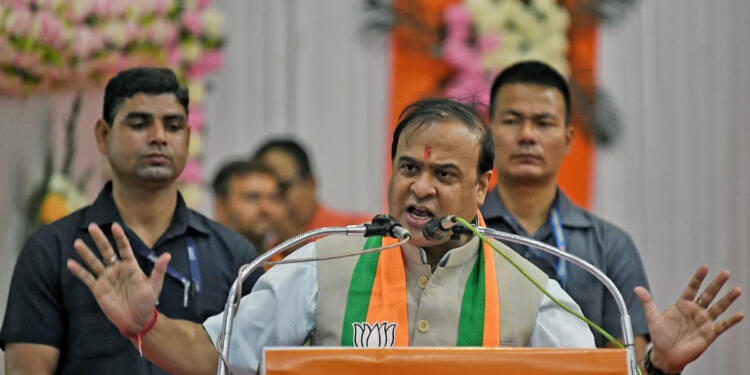As the BJP faces internal challenges and external criticisms, Assam’s successful job creation programs under Chief Minister Himanta Biswa Sarma offer a promising model for other states to follow.
BJP’s Strategic Shift
After the 2024 Lok Sabha elections, political commentators pointed out the organizational and communicative weaknesses within the Bharatiya Janata Party (BJP) in several key states. In response, the BJP held a high-level meeting in New Delhi with their chief ministers to strategize and realign their administrative approach.
Spotlight on Assam
During this meeting, Assam’s Chief Minister, Dr. Himanta Biswa Sarma, received significant praise from senior BJP leaders and fellow chief ministers. Prime Minister Narendra Modi specifically lauded Sarma for creating 1 lakh government jobs in Assam, highlighting it as a notable achievement amidst rising unemployment concerns in the country. Modi’s request for Sarma to present his employment program details to other state leaders indicates a potential shift towards adopting the Assam Model on a national scale.
The Assam Model
The Assam Model, characterized by targeted job creation and effective governance, stands out as a template for broader national implementation. This model balances both capital expenditure and social security, addressing unemployment while fostering economic growth.
Creating 1 Lakh Government Jobs
The Assam Model’s core principle is its aggressive job creation strategy, which has significantly reduced unemployment and boosted economic development.
Overcoming Recruitment Challenges
Before 2021, Assam’s public sector recruitment faced numerous challenges, including vacant positions across various government departments, inefficiencies in recruitment processes, and issues with examination timelines. These problems were compounded by court cases related to examination procedures and reservation policies, as well as allegations of corruption.
Centralized Recruitment System
To address these challenges, Dr. Sarma’s government implemented a centralized recruitment system. This included direct recruitment commissions for similar posts and state-level recruitment commissions for Class III and IV positions. By grouping vacant posts by qualification and conducting common written examinations, the government standardized the evaluation process and reduced costs. Separate skill tests or interviews ensured a uniform approach to recruitment.
Challenges and Solutions
The initiative faced several challenges, such as coordinating with 48 different departments to consolidate vacancies and standardize reservation criteria. A leadership-driven approach streamlined processes and ensured consistency across departments.
Managing written tests for 14 lakh candidates and conducting 58,000 interviews required innovative measures to prevent unfair practices. Multiple interview boards capable of handling up to 1,000 interviewees daily were set up to manage this large-scale operation.
Efficient and Transparent Recruitment
The centralized recruitment system significantly improved efficiency and transparency. Consolidating recruitment drives into a single process reduced government expenditure and conserved resources. Technology integration eliminated cheating and paper leaks, boosting public confidence in the recruitment process. Candidates benefited from a unified application process, reducing financial burdens associated with multiple application fees.
Results and Impact
These combined efforts led to the successful placement of 97,454 government jobs across various sectors. This extensive recruitment drive not only filled vacancies but also broadened employment opportunities, strengthening the workforce and enhancing public service delivery in Assam. The next round of examinations, scheduled for September, aims to fill another 7,600 vacancies, bringing the total employment figure beyond 1 lakh.
Broader Implications
The Assam Model’s emphasis on practical, scalable solutions aligns with the BJP’s broader framework of self-reliance and economic development. By generating substantial job opportunities, the Assam government has mitigated economic distress and bolstered social stability and political goodwill.
Administrative Efficiency
The success of the Assam Model is also due to robust administrative mechanisms marked by transparency and accountability. Sarma’s hands-on governance style and responsiveness to public grievances contrast with the bureaucratic inertia observed in larger states. This model’s success reflects a decentralized yet coordinated administrative strategy effective in India’s diverse federal structure.
A New Governance Paradigm
The BJP’s adoption of the Assam Model signifies a significant evolution in its governance approach. The successful implementation of Sarma’s employment programs offers a promising roadmap for other states. By prioritizing economic development and administrative efficiency, the Assam Model could play a crucial role in redefining the BJP’s national strategy and restoring its electoral fortunes.
ALSO READ: S. Jaishankar Made it Very Clear to Chinese Counterpart Wang Yi































